China remains the world’s manufacturing superpower. In 2023 its manufacturing value‐added hit $4.66 trillion – about 29% of global output. This colossal scale is concentrated in regional “industrial belts” – agglomerations of factories, suppliers, and skilled labor in proximity – that serve as backbone hubs for global supply chains. For global importers and sourcing professionals, understanding these belts is critical. They determine where to find electronics versus textiles, how quickly goods can ship, and what quality standards to expect. China’s coastal provinces (Guangdong, Jiangsu, Zhejiang) have historically attracted preferential policies and infrastructure, making them manufacturing hot spots. By 2025, China’s industrial belts – from the Pearl River Delta to the emerging Chengdu–Chongqing axis – have further evolved into specialized ecosystems that underpin global trade and innovation.
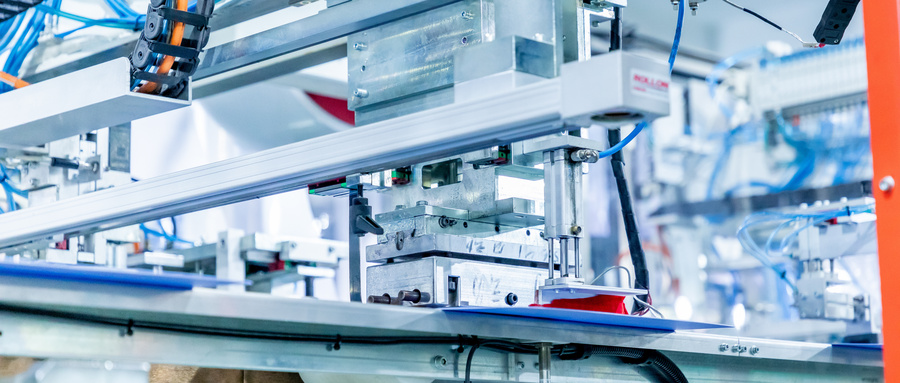
What Are Industrial Belts?
Industrial belts (or clusters) are geographic zones where related industries agglomerate to gain efficiency. In China, these belts often focus on narrow product categories: for example, northern Hebei’s Baoding specializes in high-end luggage, Zhejiang’s Wenzhou in footwear, Guangdong’s Shantou in toys, Foshan in furniture, and Zhongshan in lighting. Such clustering yields shared suppliers, infrastructure and labor pools. Companies benefit from proximity to component makers and each other, which lowers costs and speeds development. Many belts have reached immense scale: Alibaba’s 2024 report notes 50 “10-billion-Yuan” belts (with ≥¥10B turnover) centered in the Pearl River and Yangtze deltas, each hosting multiple specialized industries. For example, Guangdong alone has 21 such belts, with cities like Guangzhou and Dongguan home to clusters in women’s apparel, furniture, mobile phones and accessories. By bringing a full supply chain into one area, industrial belts allow exporters to iterate designs quickly and launch new products – a “supply chain inside a factory” effect.
The Major Industrial Belts of China (2025 Breakdown by Region)
1. Pearl River Delta (Shenzhen, Dongguan, Guangzhou)
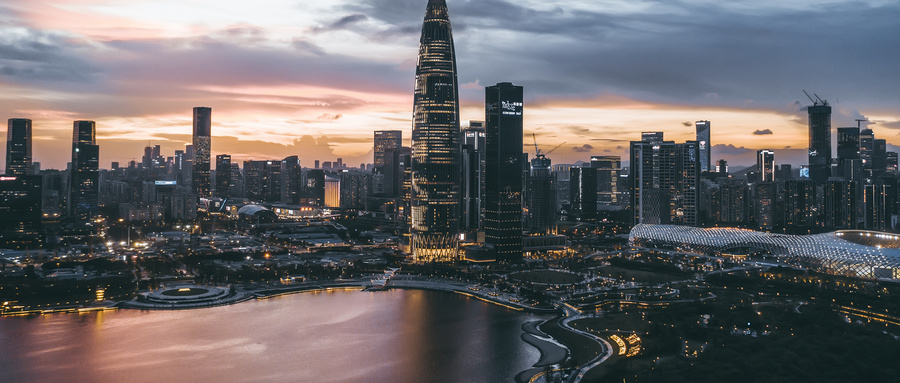
The Pearl River Delta (PRD) – often called China’s “World Factory” – remains the largest and most dynamic manufacturing belt. Its GDP soared from US$448 billion in 2007 to $2.0 trillion by 2019. This densely urbanized region (Guangdong Province including Hong Kong and Macau) houses the famed Four Guangdong Dragons – Shenzhen, Dongguan, Nanhai (Foshan), and Shunde – which led China’s growth surge. Today Shenzhen anchors high-tech manufacturing and innovation: the vast Huaqiangbei electronics markets supply components for smartphones, drones and consumer gadgets. Dongguan’s factories turn out electronics, plastics and toys, while Foshan/Shunde specializes in furniture, ceramics and building materials. Guangzhou blends auto parts, machinery and consumer goods. In short, the PRD is a major base for electronics, garments, textiles, plastics and fast-moving consumer products.
Logistically, the PRD is extremely well-connected. It is served by mega-ports (Shenzhen, Guangzhou) handling 25–30 million TEUs annually, plus Hong Kong’s deep-water port. Modern infrastructure like the Hong Kong–Zhuhai–Macau and Shenzhen–Zhongshan bridges (each ~50 km) tie cities together and shorten transit times. This means export containers from Shenzhen or Guangzhou can reach global shipping lines or inland via rail in hours, benefiting high-volume exporters. The PRD’s large domestic market has also grown: today many factories target Chinese consumers as much as foreign markets. In sum, PRD excels for electronic goods, telecom hardware, consumer electronics, lighting, furniture, toys, clothing and home decorations, backed by world-class ports and an integrated regional supply chain.
2. Yangtze River Delta (Shanghai, Suzhou, Hangzhou)

East China’s Yangtze River Delta (YRD) – centering on Shanghai and extending into Jiangsu and Zhejiang provinces – is another powerhouse belt. It has become a high-end manufacturing and innovation hub, housing dozens of advanced industrial clusters. The region led the nation in building national advanced manufacturing clusters (26 such zones, 32.5% of China’s total). In 2024 YRD’s foreign trade reached 36.5% of China’s total, thanks to major ports (Shanghai, Ningbo) and proximity to domestic and Asian markets.
Shanghai itself is home to heavy industry and R&D: it has become a key base for semiconductors, aerospace, petrochemicals, and autos (Shanghai’s SAIC-GM and Volkswagen joint ventures). Suzhou and nearby Wuxi host large electronics and precision machinery parks. Hangzhou (Alibaba’s HQ) drives e-commerce and smart logistics. Notably, the YRD accounts for roughly half of China’s semiconductor manufacturing and testing capacity. It also produces a large share of China’s laptops, industrial robots and biotech equipment. The Port of Shanghai (Yangshan Deepwater) is the world’s busiest container port (~50+ million TEUs), serving the entire delta’s exports.
Key specialization in the YRD includes electronics and digital components, automotive and auto parts, semiconductors, precision machinery (machine tools, industrial robots), and home appliances. Textiles and apparel remain important (Zhejiang’s garment factories, Suzhou’s silk/synthetic fiber), but the region has shifted heavily toward hi-tech goods. With top-tier logistics and a consumer affluence, it also sees substantial investment in electric vehicles, lithium batteries (e.g. Gotion in Hefei), and green tech. In short, importers look to the Yangtze Delta for advanced electronics, semiconductors, industrial machinery, and automotive products.
3. Bohai Economic Rim (Tianjin, Beijing, Qingdao)
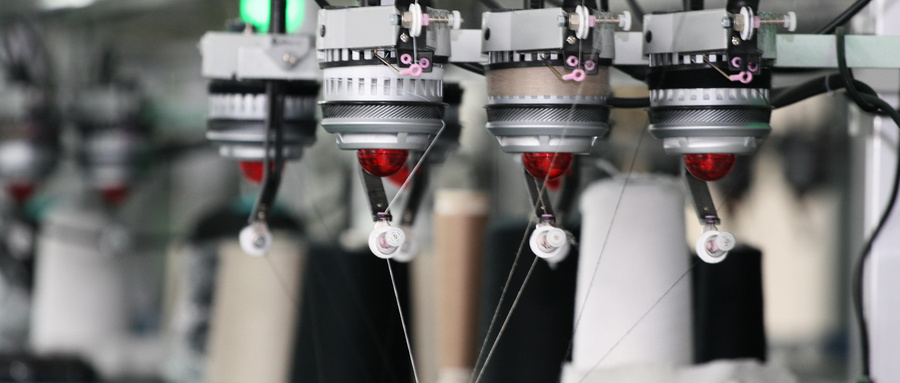
The Bohai Rim in North China (Beijing-Tianjin-Hebei–Shandong–Liaoning) forms China’s third major industrial belt. Often called the country’s “third growth pole,” this region covers rich heavy industries and growing tech sectors. Historically, it has been heavy-industry–oriented (steel, petrochemicals, coal) and export-driven. Today it is modernizing: Tianjin and northern ports serve as critical gateways for northern factories.
Beijing itself focuses on R&D and high-tech (software, biotech, aerospace), though some old industries remain. Tianjin’s belt specializes in communications equipment, software, and home appliances, with giant firms like Tianjin Meiji Electric. Hebei hosts steel mills (Tangshan) and automotive (FAW’s engine plant in Qinhuangdao). On the Shandong peninsula, cities like Qingdao and Yantai lead consumer goods and heavy machinery: Qingdao is a major hub for smart home appliances (Haier, Hisense) with over 2,200 related companies and 52 national-level R&D centers. Yantai/Penglai/Pingdu are big in petroleum, chemicals, and wine (Changyu).
Overall, the Bohai Belt is rich in heavy machinery, autos, steel, petrochemicals, home appliances and electronics. Its key ports – Tianjin and Qingdao – handle bulk cargo like coal and manufactured exports. Because this belt covers both the capital area and industrial Shandong, it often serves as a testbed for policies (e.g. pollution controls). For importers, it means access to large-volume commodities and finished goods, but also burgeoning technology products from Beijing’s innovation ecosystem.
4. Central China (Hubei, Henan)
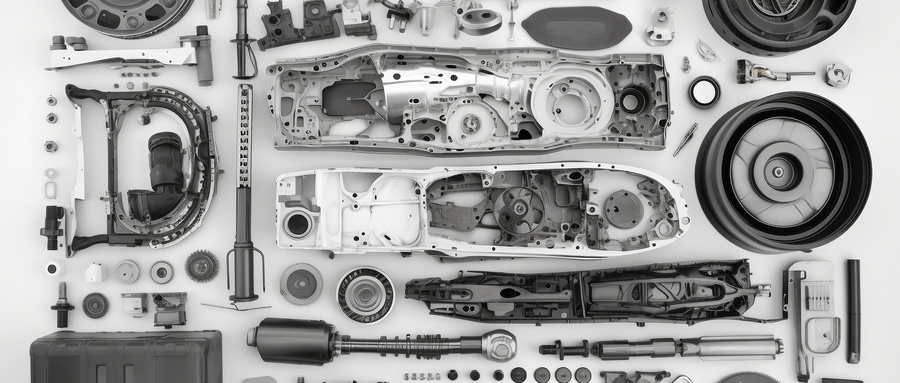
Central China’s belt, centered on Hubei (Wuhan) and Henan (Zhengzhou), has emerged as a strategic growth region. It accounts for about 30% of China’s population and 18% of GDP. This area has become a critical nexus for logistics, energy and manufacturing. Shanxi’s coal fuels ~25% of China’s electricity, making it an energy heartland. The Yangtze River flows through the region, now carrying ~40% of the nation’s inland cargo. Wuhan (Hubei) is a “5-in-1” transport hub (river, rail, road, air, pipeline) handling ~12 million TEUs annually, linking inland industry to coastal ports.
Industrially, Central China has a mix of old and new manufacturing. Wuhan hosts major auto (Dongfeng-Peugeot, Nio, and electric bus plants), locomotive and steel factories. Henan has heavy truck and machine tool production. Hefei (Anhui) nearby leads in EV batteries and semiconductors with major FDI investments. The government’s “Rise of Central China” plan (2021–25) attracted over $150 billion in high-tech projects like semiconductor fabs in Hefei and EV battery plants in Changsha. While still less developed than the coast, Central belts offer cost advantages and growing infrastructure (new highways, high-speed rail links through Zhengzhou). For sourcing: expect to find steel, building materials, machinery and competitive-priced electronics and auto parts (e.g. Foxconn and other electronics in Zhengzhou).
5. Western China (Chongqing, Chengdu, Xi’an)

Western China’s industrial belt (Chengdu–Chongqing Economic Circle) has been elevated to a “fourth growth pole” by planners. It spans Sichuan province, Chongqing and surrounding areas. In 2023 its GDP reached about $1.6 trillion. Key sectors here include electronics, automotive and biotech: the region produces roughly 40% of China’s laptops and 12% of its cars. Chongqing city stands out as a major auto manufacturing center with a full supply chain: its plants (Changan, Lifan, Ford) churn out conventional and new-energy vehicles (NEVs) in vast numbers. By 2025 Chongqing output in electronics and telecom products exceeded RMB 700B, and the city even hosts an SK Hynix IC factory.
Chengdu (Sichuan) is an IT and aerospace hub: it houses big facilities for airplanes (COMAC, engine parts), software R&D, and semiconductors (Intel’s Chengdu fab, others). Xi’an (Shaanxi) focuses on aerospace and defense electronics. The Western belt benefits from central government investment and the 2021 cross-country high-speed rail linking Chongqing to Xiamen, cutting transit times. For importers, the region offers competitive manufacturing in vehicles, aerospace components, electronics (especially NEVs and chips) and precision equipment. Transporting goods out is improving via expanded rail freight corridors (Chongqing to Europe trains) and river-rail intermodal links on the Yangtze.
6. Coastal Light-Industry Zones (Fujian, Shandong)

Along China’s southeast and east coasts lie specialized light manufacturing belts. Fujian province (cities like Xiamen, Quanzhou, Jinjiang, Putian) is famous for consumer goods. For example, Fujian’s Jinjiang city is a global center for textiles and shoes; in 2023 the footwear and apparel industry output was ~RMB 140 billion (≈$19 billion). Putian (Fujian) alone produced 1.6 billion pairs of shoes in 2023, thanks to over 4,000 footwear enterprises. Quanzhou (Fujian) makes machinery, tiles and consumer ceramics. Xiamen hosts electronics and petrochem plants. An Alibaba report notes Fujian’s top clusters: Jinjiang (textile/footwear), Quanzhou (machinery/building materials), Ningde (lithium batteries), Fuzhou (textile) and Xiamen (electronics).
Shandong province (east coast) mixes heavy and light industry. Qingdao is home to Haier and Midea and leads advanced home appliances (with 2,200+ smart appliance firms and 52 R&D centers). Yantai has chemicals, electronics and automobile sectors; Weifang makes machine tools and sewing machines. Shandong’s size means it has everything from plastic goods to furniture clusters. In short, these coastal belts are go-to sources for footwear, apparel, toys, household items and small appliances – often commodity products where scale and cost efficiency matter.
Sector-by-Sector Analysis Within These Belts
-
Electronics & Semiconductors: China’s industrial belts dominate global electronics supply. The PRD (Shenzhen/Dongguan) is the world’s workshop for consumer electronics and telecom equipment. The YRD (Shanghai/Suzhou) hosts major semiconductor fabs and electronics assembly. It alone accounts for over half of China’s integrated-circuit manufacturing and testing capacity. Chongqing in the western belt and Chengdu also build smartphones, PCs and components (Chongqing had RMB 700B electronics output in 2022). Ningbo (Zhejiang) and Tianjin contribute smaller but important electronics clusters (e.g., LCD panels, telecom gear). Overall, importers source circuit boards, chips, displays and finished electronics primarily from the PRD and YRD belts.
-
Textiles & Apparel: Traditionally strong in the PRD and adjacent zones, textiles and clothing have partly migrated inland. The PRD still has large garment manufacturing and textile machinery (Dongguan denim, Shenzhen fashion OEMs). Fujian (Putian, Jinjiang) and Zhejiang (Wenzhou, Shaoxing) dominate shoes and apparel. Alibaba’s analysis noted 23 of China’s top belts are in clothing, including 9 dedicated to women’s apparel. Central China (Henan) has many garment factories, as do coastal clusters like Guangdong (casual wear) and Shandong (household textiles). For importers, budget or mid-tier fashion items often come from Fujian/Zhejiang, whereas technical fabrics or polyester yarns come from Jiangsu/Shandong.
-
Automotive & Heavy Machinery: Northeast and central belts led China’s heavy industry; now auto production is widespread. The YRD (Shanghai, Nanjing) is China’s historic auto heartland (SAIC, NIO, GAC), while Chongqing is the largest auto hub in the West. Heavy-duty machinery (construction equipment, mining gear) comes from Liaoning (Shenyang), Hunan (Changsha), and central provinces. The Bohai Rim (Beijing/Tianjin) has large machine-building bases. Importers sourcing vehicles or parts often turn to Shanghai (engines, chassis) and Chongqing/Chengdu (complete vehicles, NEVs). Many trucks and construction machines are made in Henan and Hubei.
-
Plastics & Home Goods: Household products – from plastic kitchenware to decorations – are largely produced in Guangdong and Fujian belts. Dongguan and Yiwu (Jinhua, Zhejiang) are famous for plastic toys, gift items and stationery. Guangdong’s clusters in Dongguan and Zhongshan export billions of plastic components. Meanwhile, Jiangsu and Shandong factories make higher-grade home goods (dinnerware, molds). The PRD’s “World’s Factory” nature means anything from plastic packaging to LEDs to candles can be sourced there.
-
Furniture & Home Décor: Foshan/Shunde (Guangzhou) is China’s biggest furniture manufacturing hub. Nearby Zhongshan (Guangdong) produces lighting fixtures, decorative hardware and home furnishings. Shandong (Weihai) and Zhejiang (Dongyang, Huangyan) also make furniture and crafts. For example, Alibaba identifies Foshan’s furniture belts as top 10-billion-yuan clusters. Importers usually go to Guangdong for modern furniture lines, while Zhejiang offers wooden and metal furnishings at scale.
-
Tools & Precision Parts: Wenzhou (Zhejiang) is world-famous for small hardware tools and fittings. Chang Tools (Jinhua, Zhejiang) and similar firms make hand tools and power tool accessories. Suzhou and Ningbo produce high-precision automotive and industrial parts. Much of this output serves domestic automobile and machinery manufacturers, but spare parts and hand tools are also widely exported. While specific stats are scarce, importers should look to Zhejiang and Jiangsu suppliers for hand tools, dies, screws and small machined parts.
-
Green Energy & Lithium Batteries: The push for new energy vehicles and renewables has created powerhouse clusters. Fujian’s Ningde (CATL) is now the world’s largest lithium-ion battery production base. In 2022, Ningde’s battery sector output reached RMB 275.8 billion (≈$40.7 B). Nearby cities (Xiamen, Putian) make EV motors and solar panels. The YRD (Shanghai, Suzhou) has EV factories and battery R&D centers. Sichuan (Ningbo University’s battery research in Zigong) and Hubei (Dongfeng’s EV arm) are growing too. Importers in the EV supply chain should target Ningde for cells, Shanghai/Chongqing for electric cars, and Jiangsu/Zhejiang for solar and wind components.
Logistics & Infrastructure: Moving Goods Efficiently in 2025
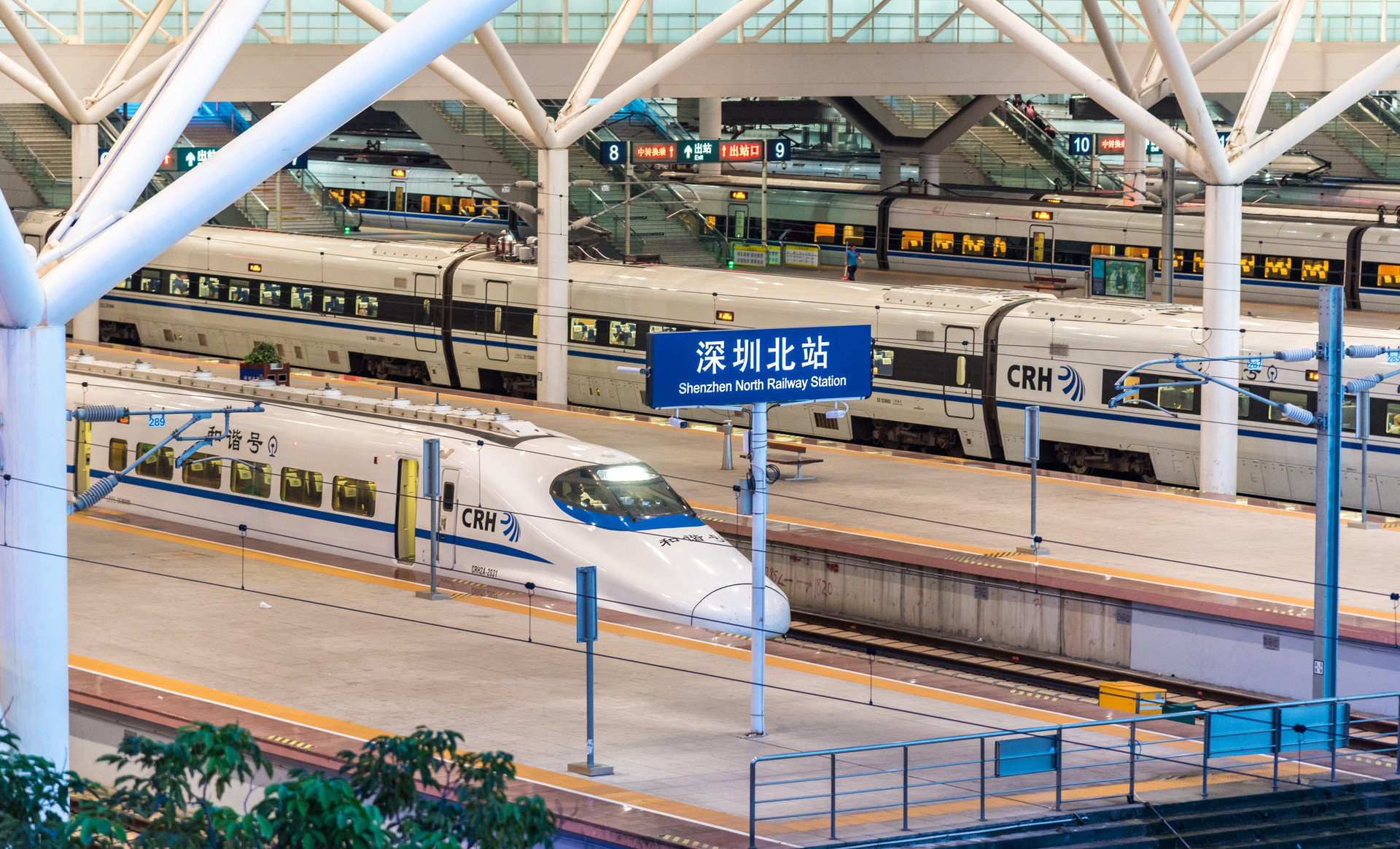
China’s infrastructure underpins its industrial belts. For exporters, the port and rail network is especially vital. In 2024 China’s top 10 ports together processed ~239 million TEUs (up 7.1% year-on-year). The Port of Shanghai remains the busiest (handling ~50+ million TEUs), while Ningbo-Zhoushan and Shenzhen each handle 30+ million. Other key ports include Qingdao, Guangzhou and Tianjin. All told, six of the world’s ten largest container ports are in China. This network means a manufacturer in Guangzhou or Wuhan can load containers onto global ships rapidly. Shenzhen port alone handled 27–30M TEUs in 2024, driven by high-tech exports.
Inland, high-capacity ports on the Yangtze (e.g. Chongqing, Wuhan) are expanding. These river ports link Western factories to Shanghai via barges; for instance, Chongqing in 2024 moved over 9.0M TEUs and is targeting 12M by 2025. Intermodal rail is improving. China’s rail network totals about 162,000 km, including ~48,000 km of high-speed rail (HSR). By end-2025, the HSR network will reach ~50,000 km, covering 97% of cities above 500,000 people. These trains not only speed travel, but also mean faster freight: cargo once taking weeks by road or ship can now move in days via dedicated freight lines. In fact, high-speed and dedicated lines have cut journeys (e.g. Beijing–Chongqing) to under 6 hours.
China also boasts a massive road network (≈1.9 million km of highways). Industrial belts are usually adjacent to major expressways, enabling quick truck shipments regionally. Logistics zones (rail terminals, bonded warehouses, express road links) are co-located with industrial parks. For example, the Beijing–Shanghai high-speed corridor ties YRD to the north, while the Sichuan–Chongqing rails tie into Chongqing’s hubs. Last, China’s modern airports support airfreight for high-value goods (e.g. Shenzhen, Shanghai Pudong). All this means global buyers can ship from Chinese factories via ports, rail corridors to Europe (China–Europe freight trains), or highway to Southeast Asia. In summary, China’s logistics infrastructure continues to evolve: ports are automated and green, inland hub capacities grow, and the rail/road grid minimizes the “tyranny of distance” from factory to container.
Regional Sourcing Considerations: What to Buy Where
To source efficiently, match products to each belt’s strengths:
-
Pearl River Delta (Shenzhen/Dongguan): Top choice for consumer electronics and components (smartphones, tablets, LEDs, PCBAs) as well as plastic goods, lighting fixtures, toys and electronics accessories. Factory turnaround is fast here, but competition and labor costs are higher than inland.
-
Yangtze River Delta (Shanghai/Suzhou): Best for high-tech and heavy manufacturing – industrial PCs, semiconductors, telecommunications gear, plus automotive parts and precision machinery. This region also supplies home appliances (refrigerators, AC units) and biotech equipment. Quality standards tend to be stricter in YRD, reflecting its R&D focus.
-
Bohai Rim (Tianjin/Beijing/Shandong): Specialized in heavy machinery, chemicals, metals and household appliances. Beijing/Tianjin firms sell telecom equipment and automobiles; Shandong (Qingdao) leads smart appliances (Haier fridges, etc.). Import bulk products or industrial equipment from here, and leverage Beijing’s tech for software or electronics components.
-
Central China (Henan/Hubei): Growing in vehicles, steel and energy products. Wuhan and Zhengzhou deliver commercial trucks, steel parts, railway carriages and electronics (toilets, fiber optics). Labor costs are generally lower. Consider Central China for mass-market goods (e.g. basic electronics, furniture parts) at competitive prices, but allow longer lead times out of more distant ports.
-
Western China (Chongqing/Chengdu): Excellent for automotive (especially NEVs), aerospace components and electronics. Chongqing’s plants produce cars (incl. EVs) and memory chips. Chengdu supplies auto and avionics parts, plus consumer electronics. Rising inland freight means sourcing from the West is easier than before. Expect slightly slower but more cost-stable production and leverage government incentives aimed at western development.
-
Coastal Light Industry (Fujian/Putian/Shandong): The go-to for textiles, footwear, low-end apparel and home décor. Fujian (Putian, Jinjiang) makes shoes and garments at massive scale. Zhejiang (Yiwu) is famous for small commodities, hardware and crafts. Shandong (Qingdao) targets appliances and porcelain. These regions are suited to fast-moving consumer goods. Note that quality ranges widely – inland belts are catching up, so vet suppliers carefully.
In practice, diversify: many global buyers combine regions. For example, an electronics product might use PRD for assembly, YRD for components and Fujian for packaging. Use local agents to navigate each belt’s landscape. Key sourcing tip: learn each belt’s specialty and standard suppliers (e.g. plastic enclosures from Dongguan, shoes from Putian, motors from Zhejiang) to negotiate better prices and design insights.
Supplier Vetting & Regional Manufacturing Culture
Working effectively with Chinese suppliers requires due diligence and cultural understanding. Always vet suppliers thoroughly: verify their business licenses and export qualifications, check company registration and factory addresses. Look for quality certifications (ISO 9001, BSCI/WRAP, CE/UL marking) appropriate to your products. Visiting factories in person (or via reputable local agents) is crucial. Conduct audit visits to inspect production lines, labor conditions and quality control systems. Use third-party QC firms for inspections if on-site visits aren’t possible.
Understand cultural nuances: Chinese businesses value long-term relationships (guanxi) and may be cautious in negotiations. Clarify technical requirements upfront and put them in writing (spec sheets, contracts). Pay attention to “face” – insist respectfully on meeting standards. Be aware that informal hierarchies exist; often you must work through a sales manager to reach the actual factory owner or lead engineer. Language can be a barrier: use professional translators or bilingual staff for clarity.
Payment and contracts are also part of vetting. Use secure trade terms for new suppliers. Beware of unrealistically low quotes – that can signal poor quality or hidden fees. Ask for product samples and test them thoroughly before large orders. Finally, start with smaller trial orders and scale up as trust is built. Patience and persistence pay off: once a supplier proves reliable, you gain access to the belt’s entire supply network.
Final Tips for Importers Working with Chinese Industrial Hubs
-
Plan Logistics Early: Book shipping (sea/rail) well in advance of peak seasons. China’s ports and carriers can get congested before Chinese New Year (Feb) and National Day (Oct).
-
Diversify Risk: Don’t rely on one city or factory. Spread orders across multiple belts or suppliers to avoid regional disruptions (e.g. power shortages, local outbreaks).
-
Leverage Free Trade Zones: Use Shanghai, Guangdong or Hubei FTZ benefits for faster customs clearance, bonded warehousing and testing.
-
Monitor Regulations: Stay updated on China’s export controls (esp. for electronics/technology) and international tariffs or anti-dumping duties affecting your products.
-
Invest in Relationships: Attend trade fairs (Canton Fair, East China Fair) or visit clusters to meet manufacturers face-to-face. Good relationships often yield better prices and cooperation.
-
Focus on Quality & IP: China’s rising expertise means local firms can innovate, but also pose IP risks. Trademark your brands in China and enforce design patents. Work with suppliers who have strict quality labs (as seen in clusters like Qingdao’s appliance belts).
-
Watch Trends: China rapidly moves up the value chain – expect more AI and automation in factories. Lean manufacturing and digital supply chains (e-commerce platforms, smart factories) are the norm. Ensure your sourcing strategies adapt (e.g. consider nearshoring assembly to China for quick market launches).
Following these practices will help importers leverage China’s industrial belts effectively while mitigating common pitfalls.
FAQs
Q: Which products are best sourced from China’s industrial belts?
A: Each belt has specialties. Electronics and high-tech goods (phones, PCBs, telecom gear) come chiefly from the Pearl River and Yangtze belts. Garments, toys and plastics often come from PRD and Fujian clusters. Home appliances and machinery are common in the YRD (Shanghai) and Bohai Rim (Qingdao, Tianjin). Shoes and textiles are concentrated in Zhejiang–Fujian (Putian, Jinjiang). Heavy equipment and steel come from Central/Western belts. Match your product category to the belt where that industry concentrates to get the best lead times and prices.
Q: How do China’s logistics hubs benefit my supply chain?
A: China’s port and rail network is vast. Its six busiest container ports are Chinese. The Port of Shanghai alone handles ~50M TEUs/year, with Shenzhen (~30M TEUs) and Ningbo-Zhoushan also huge. This means exporters in any coastal belt can ship by sea efficiently. Inland, large river ports like Wuhan and Chongqing are expanding rapidly, tying inland factories to global trade routes via river barges. High-speed rail now spans ~48,000 km, cutting travel and freight times nationwide. In short, goods from any major belt can reach ocean carriers or train/road routes quickly, so consider the nearest logistics hub when planning shipments.
Q: Why is China’s high-speed rail important for sourcing?
A: China’s high-speed rail (HSR) network – ~48,000 km as of 2025 – connects most major cities. While HSR is mainly passenger-oriented, it dramatically speeds up manager travel and small parcel delivery between factories and business centers. Critical new lines (e.g. Shanghai–Chongqing opened 2023) cut transit times to a few hours.
Q: How has China’s manufacturing focus changed recently?
A: China has shifted from low-value goods to high-tech products. In 1995 textiles and clothing were ~20% of exports, while electronics were <9%. By 2020, electronics accounted for 24% of exports and textiles only 10%. High-value clusters have grown (semiconductors, EV batteries, biotech). Coastal regions once flooded with clothing factories now prioritize advanced manufacturing. Inland provinces are catching up with better infrastructure. Despite rising wages, China still leads with ~29% of world manufacturing, so it remains central to global supply chains.
Q: How can importers verify Chinese suppliers?
A: Always require business licenses and proper qualifications. Check official registrations, credit reports, and previous export history. Use local third-party audits or Chinese inspection agencies to confirm facilities before large orders. Ask for factory tours or virtual walkthroughs. Inspect product samples rigorously (laboratories for electronics, textiles etc.). Work through sourcing agents or offices in China who can manage vetting.
Q: Is China still a good place to source despite competition?
A: Yes. China’s immense ecosystem – from raw materials to components – still offers unmatched scale and integration. The variety of suppliers means whatever you need – from advanced lithium batteries in Ningde to small tools in Zhejiang – can be found. Keeping Chinese manufacturing in your portfolio makes sense in 2025, as the country continues to upgrade its industrial capabilities and support exporters.
